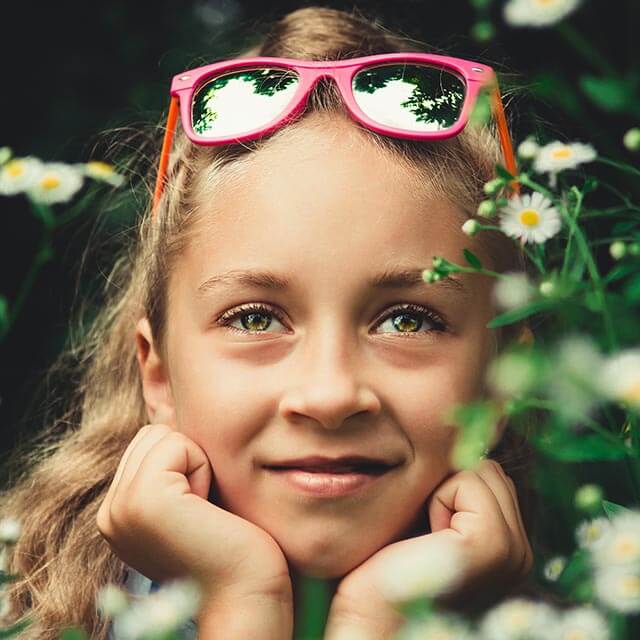
How Can Orthokeratology Help With Myopia Management?
Is your child wearing glasses or contact lenses for myopia? Is their optical prescription continually worsening every 12 to 18 months? If so, it may be time for a myopia management program featuring ortho-k contact lenses.
Orthokeratology, or “ortho-k,” is an overnight process of vision correction that leaves your child free of daytime eyewear. Along with the convenience of not having to wear glasses or contacts during the day, ortho-k has been shown to slow down or even stop the progression of a child’s myopia. An additional — yet compelling — benefit is the reduced risk of developing serious ocular conditions and diseases later in life, such as macular degeneration and retinal detachment.
If your child has myopia, speak with Dr. Melania and Dr. Mesha regarding the benefits of wearing ortho-k lenses for myopia management.
What Is Myopia?
Myopia, or nearsightedness, is an extremely prevalent eye condition that begins in childhood and usually continues to worsen during the teenage years. Myopia results when the eye shape becomes more elongated as a child grows. This causes light from distant objects to focus in front of, rather than precisely on the retina, causing blurred and distorted vision.
The continual eyeball elongation causes the optical prescription to worsen over the years, generally into the mid-to-late teens.
While glasses or regular contact lenses correct distorted vision, they don’t address the underlying problem, and thus are unable to prevent your child’s prescription from increasing into young-adulthood. Orthokeratology, on the other hand, addresses the root cause of myopia and can halt its progression.
Understanding Orthokeratology
 Orthokeratology goes by a few names:
Orthokeratology goes by a few names:
- Ortho-k
- CRT (Corneal Reshaping Therapy)
- Gentle Vision Shaping System (GVT or GVST)
- Vision Shaping Treatment (VST)
- Corneal Molding
Regardless of the name used, ortho-k is an established non-surgical method of vision correction that has been safely used for over 20 years. We will carefully measure the child’s eye and order custom-fitted and specially-designed rigid gas permeable (RGP) contact lenses.
The ortho-k lenses are to be worn overnight, during which time they gently correct the shape of the cornea. The lenses are then removed in the morning, leaving your child with crisp and clear vision all day long. As mentioned above, ortho-k not only corrects vision but can also slow —or even halt — the progression of myopia in children.
Who Can Benefit From Orthokeratology?
Both children and adults can benefit from the vision correction provided by ortho-k, though ortho-k may be the ideal solution for myopia management in children. While it is too late to slow the progression of myopia in adulthood, myopic children who wear ortho-k lenses can further benefit by lowering any risks associated with ocular diseases later in life.
What Is The Fitting Process For Ortho-k Lenses?
At 20/20 Eye Care, our patients undergo a full ortho-k assessment before being fitted for these lenses. We will evaluate the health of your child’s eye and determine the exact corrective prescription. To measure the precise curvature of the child’s cornea, Dr. Melania and Dr. Mesha will use a topographer, ensuring these customized lenses are a perfect fit.
After the initial fitting, patients will be provided with detailed instructions and in-clinic training on how to insert, remove, and care for their ortho-k contact lenses. A few periodic check-ups will help ascertain any changes in refraction and corneal topography, and adjustments to the lenses will be made accordingly.
Ortho-K Is An Investment For Lifelong Healthy Vision
By giving your child the gift of ortho-k lenses, you will improve your child’s daytime vision while also significantly reducing their risk of developing serious eye diseases later in life. The myopia management program at 20/20 Eye Care offers the best chance of controlling myopia and preserving your child’s eyes for a lifetime of clear, comfortable, and healthy vision.
20/20 Eye Care serves patients from Middle Village, Mineola, Queens, Elmhurst, and throughout New York.
